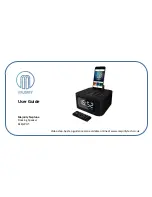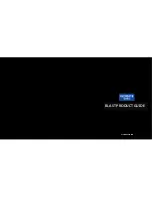
6
ably to other designs in which the voice coil is buried inside a massive piece of
metal, where the heat has effectively no place to go.
The excellent heat dissipation of these drivers makes them remarkably reliable.
Planar magnetic speakers can handle a great deal of power without undue stress
or audible strain. In fact, for a given size, they can handle many times the power
of a traditional dynamic driver.
Easy on amplifiers
Because the conductor of a planar magnetic driver is essentially a long, thin
wire, it presents a purely resistive load to the amplifier. This is comparable to the
simple test loads that amplifier companies use when measuring their amplifiers
to show how terrific they are. As such, you can be assured that your amplifiers
will sound and work their best.
Dynamic woofers
Authoritative, deep bass requires that you move a lot of air. We have chosen to
use dynamic woofers for the bass because they can provide excellent perfor-
mance at lower frequencies.
In order to get comparable bass performance from a planar magnetic design,
you would need to have a huge speaker that would be impractical in most
domestic living spaces. It simply makes more sense to use the best transducer
technology in each area of the reproduced spectrum. One of Wisdom Audio’s
strengths is in seamlessly blending these technologies — particularly important
given the high standards set by our planar magnetic drivers.
Extraordinary drivers
Of course, the dynamic woofers themselves must be rather extraordinary in
order to “keep up” with the planar magnetic drivers right up to the crossover
frequency.
Our woofers are different because they must be in order to do their job. Spe-
cifically, we need highly dynamic, uncompressed bass (to keep up with the
planar magnetic drivers) that does not depend on a critical amount of enclosure
volume (since these speakers are mounted in your wall, and use the space inside
the wall as their “enclosure”). These two design goals require rather extraordi-
nary attention to myriad details.
The motor and suspension system of these woofers therefore includes all the
critical damping required for optimal operation. (In most speakers, the woofers
depend on the air trapped inside their enclosures as an additional “spring” to
help them behave properly.) Technically, this approach is known as an “infinite
baffle” design. In practice, the volume of air behind the speaker does not have
to be infinite, of course. It just needs to be large enough to not act like an acous-
tic “spring.” Recommended and minimum enclosure volumes for the speaker are
listed in the Specifications section, and repeated on the Dimensions page.
Optimized for subwoofers
Many speakers include a mid-bass “bump” in their response to give the illusion
of going deeper in the bass than they actually do. Unfortunately, this “bump”
make blending them seamlessly with a high quality subwoofer almost impos-
sible.
All Insight Series speakers have been designed for optimally flat response to 80
Hz, which is the most-common crossover frequency used with subwoofers.




































